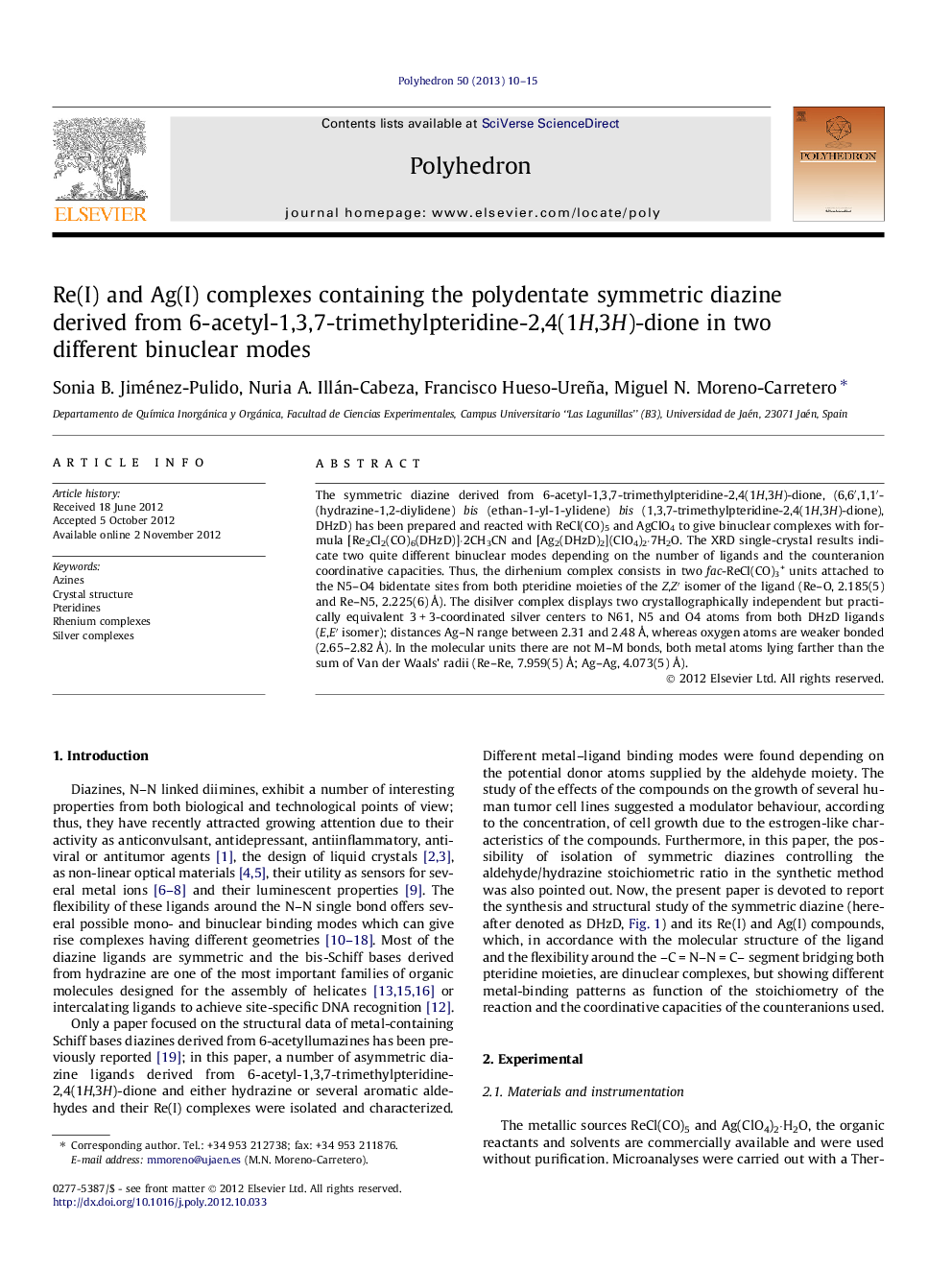| Article ID | Journal | Published Year | Pages | File Type |
|---|---|---|---|---|
| 1334615 | Polyhedron | 2013 | 6 Pages |
The symmetric diazine derived from 6-acetyl-1,3,7-trimethylpteridine-2,4(1H,3H)-dione, (6,6′,1,1′-(hydrazine-1,2-diylidene) bis (ethan-1-yl-1-ylidene) bis (1,3,7-trimethylpteridine-2,4(1H,3H)-dione), DHzD) has been prepared and reacted with ReCl(CO)5 and AgClO4 to give binuclear complexes with formula [Re2Cl2(CO)6(DHzD)]·2CH3CN and [Ag2(DHzD)2](ClO4)2·7H2O. The XRD single-crystal results indicate two quite different binuclear modes depending on the number of ligands and the counteranion coordinative capacities. Thus, the dirhenium complex consists in two fac-ReCl(CO)3+ units attached to the N5–O4 bidentate sites from both pteridine moieties of the Z,Z′ isomer of the ligand (Re–O, 2.185(5) and Re–N5, 2.225(6) Å). The disilver complex displays two crystallographically independent but practically equivalent 3 + 3-coordinated silver centers to N61, N5 and O4 atoms from both DHzD ligands (E,E′ isomer); distances Ag–N range between 2.31 and 2.48 Å, whereas oxygen atoms are weaker bonded (2.65–2.82 Å). In the molecular units there are not M–M bonds, both metal atoms lying farther than the sum of Van der Waals’ radii (Re–Re, 7.959(5) Å; Ag–Ag, 4.073(5) Å).
Graphical abstractThe symmetric diazine derived from 6-acetyl-1,3,7-trimethylpteridine-2,4(1H,3H)-dione has been prepared and reacted with ReCl(CO)5 and AgClO4 to give binuclear complexes with formula [Re2Cl2(CO)6(DHzD)]·2CH3CN and [Ag2(DHzD)2](ClO4)2·7H2O. The XRD single-crystal measurements indicate two quite different binuclear modes, both without M–M bond, depending on the number of ligands and the counteranion coordinative capacities.Figure optionsDownload full-size imageDownload as PowerPoint slide
